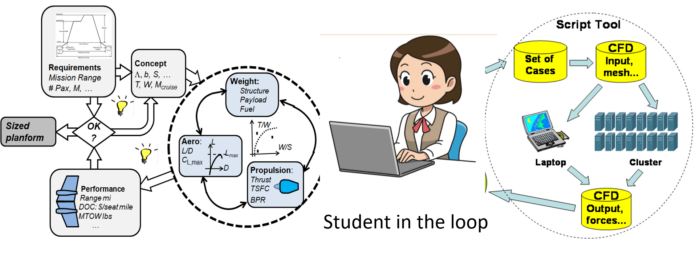This book focuses on the shaping of the lifting surfaces to give an aircraft the desired performance. Skills in shaping for performance can be built by hands-on experience in real aerodynamic design projects and learning from the masters, their successes and mistakes. Such on-the-job education is very expensive. The book takes another tack to prepare students for the job:
learning by computing.
Even laptops have the power to run the simpler tools used in aerodynamic design, so students can compute on their own and learn from their own work.

That computing plays a prominent role in learning and understanding the real world is Leibniz’ dream:
When there are disputes among persons, we can simply say: Let us calculate, without further ado, and see who is right.
Gottfried Wilhelm Leibniz, The Art of Discovery (1685)
Leibniz could not dream of the computing machines we take for granted, but raw computing power is not enough. It takes sufficient background knowledge to carefully phrase a question into a computable mathematical problem. The actual setting up of computational models requires both basic understanding of relevant physics, of the numerical methods, and of the software implementation. It is necessary to learn the ropes, i.e. the buttons on the software. Working with the projects requires also basic computer skills such as editing text files, taking screenshots, and using a command line interface.
The online resources for the book are on this link. It provides exercises, projects, what-if simulation suggestions and all the necessary software bundled into a Virtual Machine and ready to go. All the individual modules are open and available also from the developers, should the reader want to arrange her computational tools differently.

